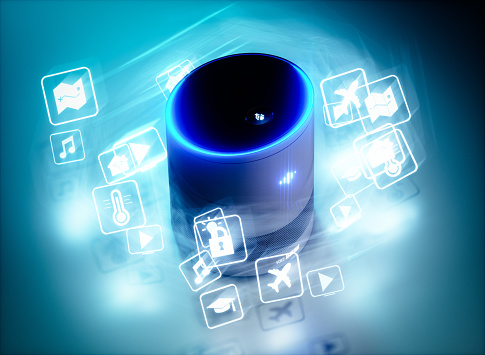Editor’s note: Julia Görnandt is country manager, Germany, at international research firm SKIM, Berlin. This is an edited version of a post that originally appeared under the title, “’Hallo Google, Alexa, Magenta: How's Voice Changing German Consumer Behavior?’”
 Voice technology and artificial intelligence were all the buzz at IFA, Germany’s largest consumer electronics show held in September. Established players launched new products in Europe and there were a few surprise offerings from new market entrants.
Voice technology and artificial intelligence were all the buzz at IFA, Germany’s largest consumer electronics show held in September. Established players launched new products in Europe and there were a few surprise offerings from new market entrants.
Google introduced its premium smart speaker – the Google Home Max – here in Germany, along with a bilingual voice assistant feature that responds to queries in English and German interchangeably. And telecom giant Deutsche Telekom introduced plans for its own smart speaker activated with the magic words “Hallo Magenta." This introduction is the first smart speaker coming from a German company and includes Amazon’s voice assistant, Alexa.
As I was setting up our new office in the heart of Berlin, I reflected on how much technology has disrupted consumer behavior from the time I grew up here. Is voice all hype in Germany? How will German consumers embrace these AI technologies? What are the implications for brands?
My team and I recently set out to answer these questions in Germany, and also in the U.S. and U.K. We explored voice technology usage and awareness from the consumer and brand perspective.
Here I’m sharing the Germany insights, which we unveiled at ESOMAR Congress 2018 in Berlin.
Voice awareness and usage in Germany
Despite voice-enabled devices being introduced later in Germany than in the U.K. and the U.S., the German market has caught up quickly. The majority (88 percent) of Germans are familiar with voice technology as it exists in smartphones, smart speakers and other devices. One-in-two German consumers reported having ever used voice technology.

Most have used voice technology on their smartphone (49 percent of German voice users), whereas only 22 percent of voice users did so on a smart speaker. Google dominates as the primary voice platform for smartphones (68 percent), while Amazon’s Echo is leading for smart speakers (65 percent).
As in the U.S. and Europe, many German users are still testing and trying out voice technology. When we see how young people and young families are embracing the technology, there’s no doubt it will become mainstream. We already see contextual habits forming: home use of smart speakers differs from use of digital assistants in the car, for example.
Changing German habits
Among German users, the most popular queries for voice are searching for information, the weather, getting directions and researching a product. Even though using voice technology to make a purchase isn’t one of the main reasons to use it (yet), German consumers’ openness to this is notable. Fifty-three percent of German voice technology users have purchased a product via a voice assistant on their smartphone, 61 percent on their smart speakers. These trials surpass both the U.S. and U.K. at the proportional rates with which they are using voice for purchasing.

Images taken from SKIM’s full, original infographic, Voice Awareness & Usage in USA and Europe (registration required).
What motivates Germans to try this new sales channel?
Besides curiosity, Germans were motivated because they thought voice would be easier and faster. Like German’s e-commerce behavior in general, the products German consumers do prefer to purchase via voice include recreational products, like books and electronics. For more functional items, such as food, pet and baby products, and personal care items, Germans still strongly prefer their local, offline stores.
It’s important to note that German consumers who’ve previously purchased using voice intend to use it more in the future. While barriers to adoption remain, such as fear of inaccurate orders or privacy concerns, it’s still important to keep in mind German consumers are largely curious about using voice technology for shopping.
Final takeaways
As with the adoption of mobile data usage, voice technology will usher in a slew of new applications to enable brands to directly interact with German consumers. As AI platforms continue to strengthen their position, it will be vital for you to integrate voice into your sales and communications strategy to thrive in this new reality. Some of our recommendations include:
- Collaborate with retailers to stay at the top of the queries list. If the assistant doesn’t offer your brand first or second, you will be obsolete.
- Leverage market research insights to determine which digital assistant actions or skills you should develop to interact 1:1 with consumers
- Consider a direct-to-consumer business. While this poses its own set of challenges, selling and interacting directly with consumers stand to be a more rewarding approach for brands navigating this fourth sales channel.
